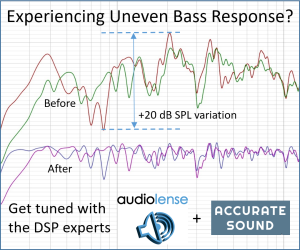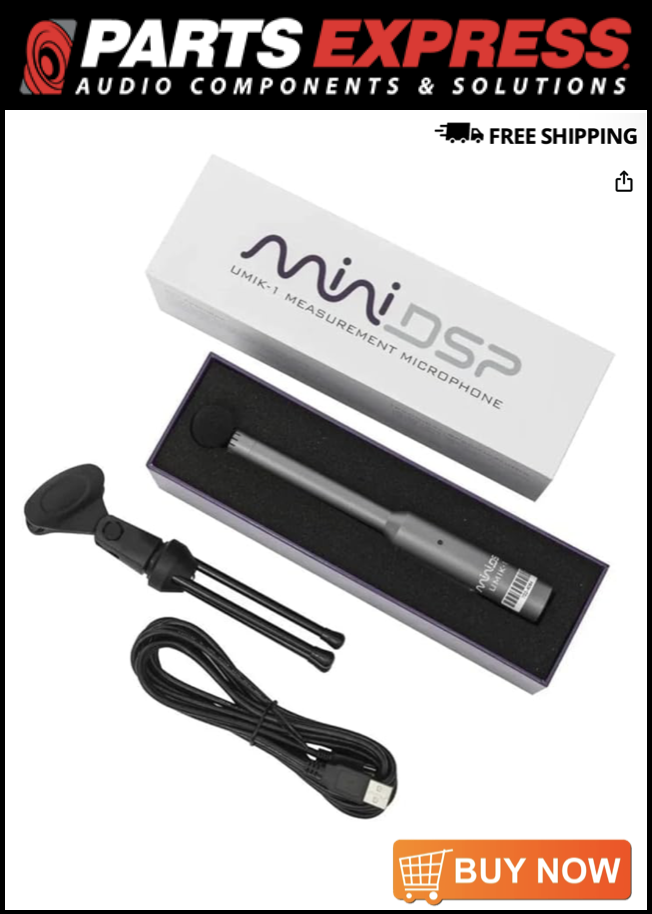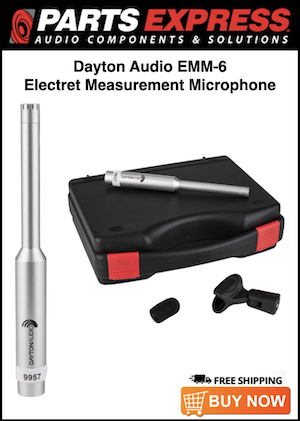Leo11
Registered
Thread Starter
- Joined
- Jul 23, 2022
- Messages
- 32
More
- Main Amp
- Hypex NC252MP
- Additional Amp
- Hypex NC502MP
- Computer Audio
- Dell notebook
- DAC
- Motu Ultralite Mk5
- Front Speakers
- NHT C3
- Subwoofers
- 2x 12" DIY Scan Speak acoustic suspension
- Streaming Subscriptions
- Amazon Music Unlimited
Hello everyone,
I open this thread to ask if it is possible to develop an additional correction function in Audiolense, combined with its convolver.
Measurements of audio equipment are now fashionable and many people are specializing in this, offering ever more comprehensive measurements.
Among these is Erin, who in his Audio Corner publishes many measures of speakers, including those of compression. I quote his site:
The below graphic indicates just how much SPL is lost (compression) or gained (enhancement; usually due to distortion) when the speaker is played at higher output volumes instantly via a 2.7 second logarithmic sine sweep referenced to 76dB at 1 meter. The signals are played consecutively without any additional stimulus applied. Then normalized against the 76dB result.
The tests are conducted in this fashion:
76dB at 1 meter (baseline; black)
86dB at 1 meter (red)
96dB at 1 meter (blue)
102dB at 1 meter (purple)
The purpose of this test is to illustrate how much (if at all) the output changes as a speaker’s components temperature increases (i.e., voice coils, crossover components) instantaneously.
Basically, the frequency response of the loudspeaker changes as the sound pressure emitted varies.
In Erin's measurements you can see speakers that change even 2 or 3 db.
Now, since Audiolense (and any other room correction software) creates correction filters to the specific sound pressure at which the measurements were made, listening at different volumes results in a suboptimal correction, even audibly.
So my idea is to compensate for this non-linearity as well.
In practice this means measuring sound pressure at several levels, then creating a filter that compensates according to the digitally regulated volume in the convolver.
Would it be feasible?
I open this thread to ask if it is possible to develop an additional correction function in Audiolense, combined with its convolver.
Measurements of audio equipment are now fashionable and many people are specializing in this, offering ever more comprehensive measurements.
Among these is Erin, who in his Audio Corner publishes many measures of speakers, including those of compression. I quote his site:
The below graphic indicates just how much SPL is lost (compression) or gained (enhancement; usually due to distortion) when the speaker is played at higher output volumes instantly via a 2.7 second logarithmic sine sweep referenced to 76dB at 1 meter. The signals are played consecutively without any additional stimulus applied. Then normalized against the 76dB result.
The tests are conducted in this fashion:
76dB at 1 meter (baseline; black)
86dB at 1 meter (red)
96dB at 1 meter (blue)
102dB at 1 meter (purple)
The purpose of this test is to illustrate how much (if at all) the output changes as a speaker’s components temperature increases (i.e., voice coils, crossover components) instantaneously.
Basically, the frequency response of the loudspeaker changes as the sound pressure emitted varies.
In Erin's measurements you can see speakers that change even 2 or 3 db.
Now, since Audiolense (and any other room correction software) creates correction filters to the specific sound pressure at which the measurements were made, listening at different volumes results in a suboptimal correction, even audibly.
So my idea is to compensate for this non-linearity as well.
In practice this means measuring sound pressure at several levels, then creating a filter that compensates according to the digitally regulated volume in the convolver.
Would it be feasible?














